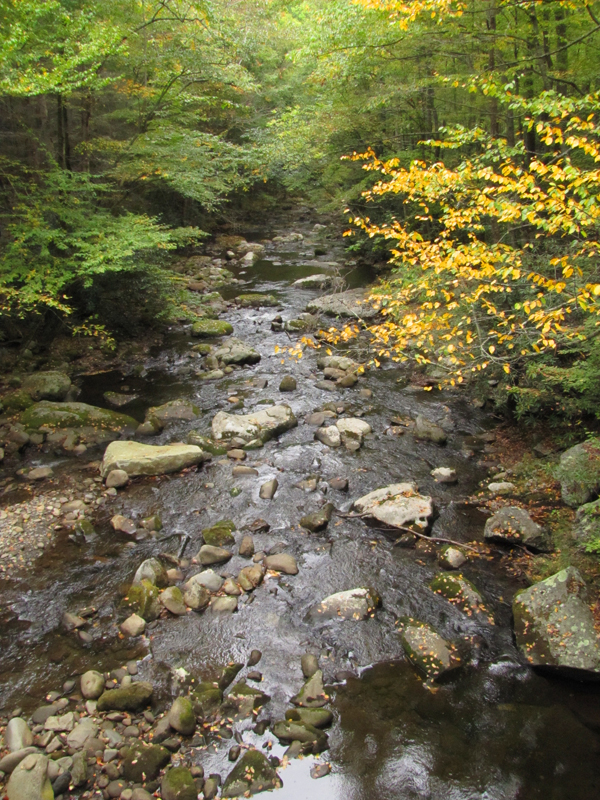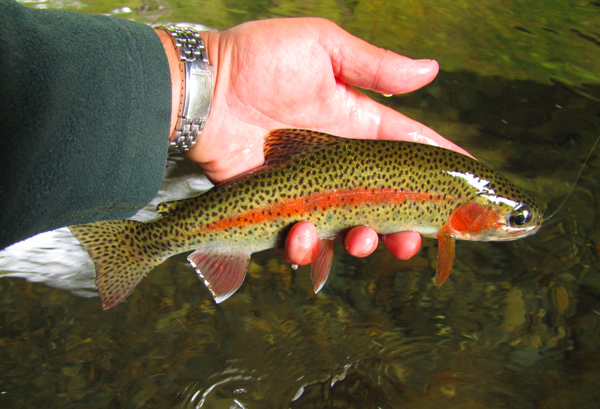It’s a rainy Monday in the Smokies and I’ll be honest. We could use a little extra water in the streams about now. The creeks aren’t at crisis levels, but considering October is typically the dryest month of the year there are probably limited opportunities for more water.
Here’s a firsthand look at water at Tremont yesterday. A little more wouldn’t hurt.
Low water can make fishing difficult, no doubt about it, but a little bit of skill coupled with some understanding of trout habits can still lead to success. Anyone who wants to catch trout in the Smokies will completely ignore calm pools right now. That’s tough water under the best of circumstances but virtually impossible when water is low.
Dry fly fishing has been very good at the riffley heads of runs and stretches of pocket water. In spite of slightly low water, temperatures are perfect. Daytime temps are in the 60’s and 70’s and water in the mid to high 50’s depending on your elevation.
This beautiful rainbow trout ate a #18 Hi-Vis Blue Wing Olive Parachute
Our tailwater situation was looking good a few days back. TVA’s predicted average flow made the crystal ball show a great week ahead, but the cold light of Monday morning doesn’t seem to show that to be true. You can still fish on the lower end of the Clinch near Clinton for a few hours in the morning before the water rises, but don’t expect to have much time to fish closer to the dam as releases start pretty early.
The South Holston and Watauga still have the most friendly flows for waders. The Holston below Cherokee has negotiable flows, but water temps are still marginal in the low 70’s so you should probably swing clear until the first good cold snap comes along to cool the water to the point it needs to be.
North Carolina’s Delayed Harvest season opens this week as well. There’s a good opportunity to waylay some fresh stockers. We prefer wild trout whenever possible, but have to admit that catching trout without having to think about it much can be fun. The Tuckaseegee and Nantahala are always top choices, but there are many of these streams across Western North Carolina.


